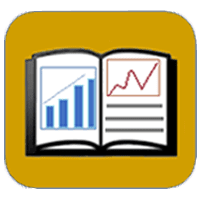Sagebrush
View article.
We identified restoration priority areas with greater precision than existing spatial prioritizations and incorporated range differences among species. We noted tradeoffs, including that restoring for habitat connectivity may require restoration actions in areas with lower probability of success. Future applications of Prioritizing Restoration of Sagebrush Ecosystems Tool will draw from emerging datasets, including spatially-varying economic costs of restoration, animal movement data, and additional species, to further improve our ability to target effective sagebrush restoration.
View article.
Pollinator familial richness, diversity, abundance, and timing of emergence were most strongly positively associated with spatiotemporal variation in minimum daily temperatures at the ground surface during the active season. Emergence timing was positively correlated with growing degree days and percent humidity, regardless of elevation. All pollinator groups varied in abundance throughout their active season, peaking in early July (bees), late July (flies), or early August (butterflies and moths). Our findings suggest that changes in nighttime temperatures, which have been steadily increasing over the last several decades as a result of climate change, may have strong effects on sagebrush steppe pollinator communities. Also, non-bee pollinators may provide particularly important pollination in this vast ecosystem during the warmest time of the year.
View framework.
This framework for 2021-2025 reflects collaborative, multi-state planning efforts to update SGI 2.0, and continues to build from a decade of success conserving the sagebrush biome. This framework also serves as NRCS’ ongoing contribution to the Sagebrush Conservation Strategy administered by Western Association of Fish and Wildlife Agencies. Sharing common cross-boundary threats, NRCS staff across eleven western states collaborated to create this shared vision for conservation action.
View article.
To address the challenge of spatial conservation prioritization, we developed the Prioritizing Restoration of Sagebrush Ecosystems Tool (PReSET). This decision support tool utilizes the prioritizr package in program R and an integer linear programming algorithm to select parcels representing both high biodiversity value and high probability of restoration success. We tested PReSET on a sagebrush steppe system within southwestern Wyoming using distributional data for six species with diverse life histories and a spatial layer of predicted sagebrush recovery times to identify restoration targets at both broad and local scales. While the broad-scale portion of our tool outputs can inform policy, the local-scale results can be applied directly to on-the-ground restoration. We identified restoration priority areas with greater precision than existing spatial prioritizations and incorporated range differences among species. We noted tradeoffs, including that restoring for habitat connectivity may require restoration actions in areas with lower probability of success. Future applications of PReSET will draw from emerging datasets, including spatially-varying economic costs of restoration, animal movement data, and additional species, to further improve our ability to target effective sagebrush restoration.
View article.
We need to spend less time searching for general rules and more time embracing the complexity and context-dependence within rangeland science. Rather than writing off findings that do not fit our current worldview, we should challenge ourselves to broaden our views in ways that reconcile multiple findings or multiple truths. It is possible we are all partly or mostly right, and we just need to figure out why, how, and in what contexts. There is value in doing research in a way that focuses on really listening to and respecting multiple perspectives so that the results we produce not only qualify as facts, but also as truths that many people can buy into and get behind.
View abstracts.
These abstracts of recent papers on rangeland management in the West were prepared by Charlie Clements, Rangeland Scientist, USDA Agricultural Research Service, Reno, NV.
Webinar recording.
Working Lands for Wildlife – the Natural Resources Conservation Service’s premier approach for conserving America’s working lands to benefit people, wildlife and rural communities – is excited to share information on two, action-based frameworks for conservation. The frameworks are the result of a multi-state planning effort and lay the foundation for the first biome-scale approach to wildlife conservation on working rangelands in grassland and sagebrush biomes. These efforts build on past achievements of the Lesser Prairie-Chicken and Sage Grouse Initiatives that together have partnered with more than 3,200 ranchers and conserved 10.3 million acres of working rangelands. The framework approach is designed to increase conservation and restoration of rangelands by addressing major threats to rangeland health and through the implementation of conservation measures that limit soil disturbance, support sustainable grazing management, promote the strategic use of prescribed fire and support native grassland species. Together, the frameworks leverage the power of voluntary, win-win conservation solutions to benefit people and wildlife from the Mississippi River to the Pacific Ocean.
Webinar recording.
In coordination with the Western Assoc of Fish and Wildlife Agencies, BLM, USFWS, and USGS, we are hosting a webinar that will introduce the content of the first part of the Sagebrush Conservation Strategy. The strategy highlights continuing pressures from unprecedented wildfires fueled by invasive annual grasses, as well as cropland conversion and disturbance associated with the development of other resources. These changes impact not just wildlife but also diverse human communities that depend on healthy sagebrush for their wellbeing.
Access report. Watch the webinar.
The sagebrush (Artemisia spp.) biome, its wildlife, and the services and benefits it provides people and local communities are at risk. Development in the sagebrush biome, for many purposes, has resulted in multiple and often cumulative negative impacts. These impacts, ranging from simple habitat loss to complex, interactive changes in ecosystem function, continue to accelerate even as the need grows for the resources provided by this biome. This “Sagebrush Conservation Strategy—Challenges to Sagebrush Conservation,” is an overview and assessment of the challenges facing land managers and landowners in conserving sagebrush ecosystems. This strategy is intended to provide guidance so that the unparalleled collaborative efforts to conserve the iconic greater sage-grouse (Centrocercus urophasianus) by State and Federal agencies, Tribes, academia, nongovernmental organizations, and stakeholders can be expanded to the entire sagebrush biome to benefit the people and wildlife that depend on this ecosystem. This report is organized into 3 parts.
“Part I. Importance of the Sagebrush Biome to People and Wildlife” introduces the biome and a subset of the more than 350 species of plants and animals associated with sagebrush for which there is some level of conservation concern. These include several sagebrush obligates that have been petitioned for listing under the Endangered Species Act of 1973 (16 U.S.C. 1531 et seq.), including greater sage-grouse, Gunnison sage-grouse (C. minimus; listed as threatened), and pygmy rabbit (Brachylagus idahoensis). Other sagebrush-dependent species, such as pronghorn (Antilocapra americana) and mule deer (Odocoileus hemionus), have experienced significant population declines.
“Part II. Change Agents in the Sagebrush Biome—Extent, Impacts, and Effort to Address Them” is an overview of the variety of change agents that are causing the continued loss and degradation of sagebrush. Topics covered include altered fire regimes, invasive plant species, conifer expansion, overabundant free-roaming equids, and human land uses, including energy development, cropland conversion, infrastructure, and improper livestock grazing. Climate changes, including warmer temperatures and altered amounts and timing of precipitation, have and will likely increasingly compound negative effects to sagebrush ecosystems from all these threats.
“Part III. Current Conservation Paradigm and Other Conservation Needs for Sagebrush” begins with an overview of how sage-grouse conservation, and the associated efforts and collaborations, may be able to address threats to and restoring degraded sagebrush and habitat for other sagebrush-dependent and -associated species. Meeting conservation goals for sage-grouse, mule deer, pygmy rabbits, and other sagebrush-associated wildlife will require extensive restoration of sagebrush communities already converted or degraded by the change agents outlined in Part II of this report. Concepts, considerations, techniques for restoration, and adaptive management and monitoring are discussed to help set the stage for potential strategies to improve conditions throughout the sagebrush biome. Communication, outreach, and engagement can enhance grassroots conservation efforts and build the next generation of managers, practitioners, scientists, and communicators who will care for the sagebrush ecosystem and stimulate or sustain public participation in sagebrush conservation issues.
View video.
A short film produced by the Washington Department of Fish and Wildlife and Conservation Northwest.





